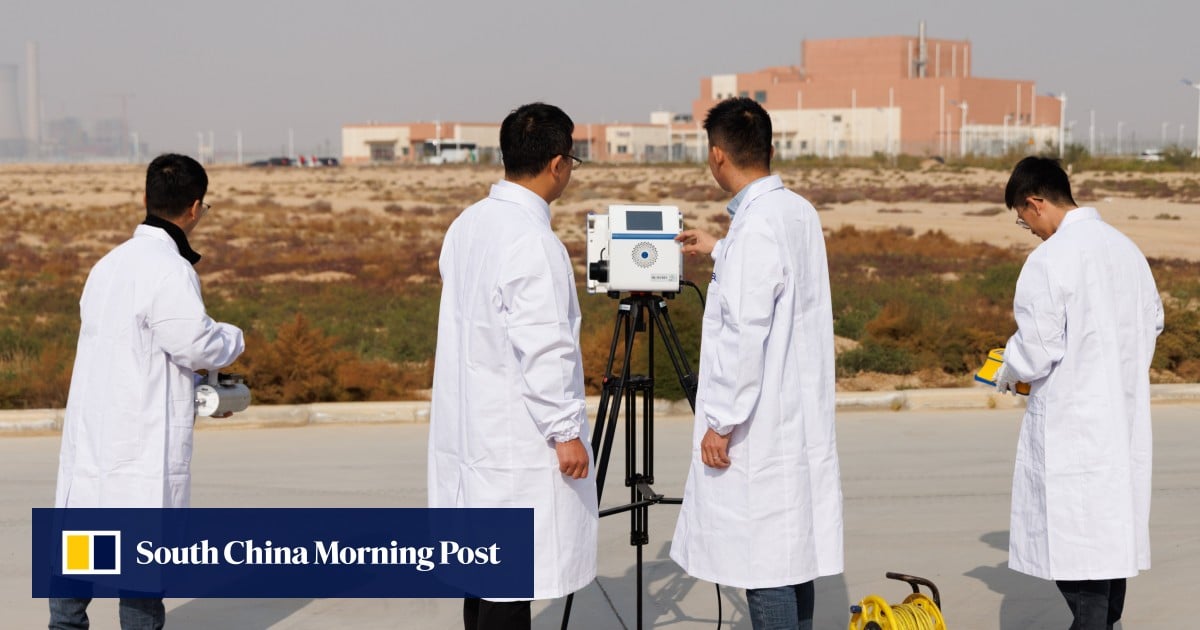Don't miss out on our latest stories. Add PCMag as a preferred source on Google.
Amazon Web Services (AWS) will lay a new subsea cable across the ocean floor, connecting Maryland and Ireland.
Amazon is already working on the cable, dubbed Fastnet, which should be up and running in 2028, David Selby, Director of Global Network Planning and Acquisition at AWS, tells us in an interview.
Fastnet promises to be a "state-of-the-art" fiber optic cable system, transporting over 320 terabits per second. That's enough to stream 12.5 million high-definition films simultaneously, or "transmit the entire digitized Library of Congress three times every second," Amazon says.
Fastnet will increase the capacity and resilience of Amazon's subsea cable network, serving as a backup route and adding diversity to the undisclosed routes it already has. It's Maryland's first cable; most on the East Coast of the US come out of New York and New Jersey, home to major cable provider Subcom, one of several partners Amazon is working with on Fastnet, Selby says.
It's common for tech companies to have multiple backup cables since they can be accidentally cut by ship anchors—or even on purpose by bad actors, which happened in the Red Sea in 2024. Such incidents are on the rise globally, The Guardian reports. Relying on just one cable could result in a situation like the island of Tonga experienced in 2022, when a volcanic eruption severed its only cable and the country got cut off from the modern world.
To prevent Fastnet from being cut or damaged, Amazon is "investing heavily" in the burial process, Selby says. "We're burying this cable as deeply as possible, for as long a distance as possible, to try to increase the availability of the cable itself, and maintaining all the usual security, multiple layers of encryption for all traffic that goes across it."

Get Our Best Stories!
Your Daily Dose of Our Top Tech News

Thanks for signing up!
Your subscription has been confirmed. Keep an eye on your inbox!
The installers will bore a hole for the cable, running horizontally from shore to shore, roughly 1.5 meters deep, with some variance depending on the topology of the sea floor. In general, subsea cables are roughly the size of a garden hose. This one will have "robust armoring...with additional layers of protective steel wires in nearshore areas to protect against natural and human activity," Amazon says.
Fastnet offers a high-performance route between the US and Europe, with Ireland acting as a gateway to the region. "Amazon’s new Fastnet transatlantic subsea cable represents a vote of confidence in Ireland’s digital future, helping to enable the next wave of innovation in cloud computing and artificial intelligence,” says Micheál Martin, Taoiseach of Ireland.

Cable landing at shore for Meta's Project Waterworth (Credit: Meta)
There are currently around 600 active and planned subsea cables, according to Telegeography.com, which maintains the a map of the existing ones. Amazon is working on building over 9 million cables, both terrestrial and underwater, which would be "enough to reach from Earth to the Moon and back more than 11 times." Meta is also working on the world's longest cable ever, called Project Waterworth.
Recommended by Our Editors
This underwater infrastructure quietly routes 95-99% of internet traffic, depending on the estimate, and are both complex to install and critical to the functioning of the web.
"These projects take an awfully long time," Selby says. "From the simple things of manufacturing the cable itself, to getting the vessels lined up, to scheduling the cable work, [and] doing the landing work."
Right now, Amazon is finalizing the design for Fastnet, and working with communities in Maryland and Ireland to address "the concerns they have—environmental concerns, commercial concerns, tourism, you name it, [plus] the global fishing community," Selby says.
The emphasis on network reliability is timely, given last month's major AWS outage, when a single failure point took down dozens of major services. However, it is not related to the cable, Selby says. Plus, the main service involved in the outage, the DynamoDB Domain Name System (DNS), differs from the two main AWS services that the Fastnet cable will support, Amazon CloudFront and AWS Global Accelerator.
About Our Expert

Emily Forlini
Senior Reporter
Experience
As a news and features writer at PCMag, I cover the biggest tech trends that shape the way we live and work. I specialize in on-the-ground reporting, uncovering stories from the people who are at the center of change—whether that’s the CEO of a high-valued startup or an everyday person taking on Big Tech. I also cover daily tech news and breaking stories, contextualizing them so you get the full picture.
I came to journalism from a previous career working in Big Tech on the West Coast. That experience gave me an up-close view of how software works and how business strategies shift over time. Now that I have my master's in journalism from Northwestern University, I couple my insider knowledge and reporting chops to help answer the big question: Where is this all going?
.png)



![Why Are Cruise Ship Pools So Small? [video]](https://www.youtube.com/img/desktop/supported_browsers/firefox.png)
